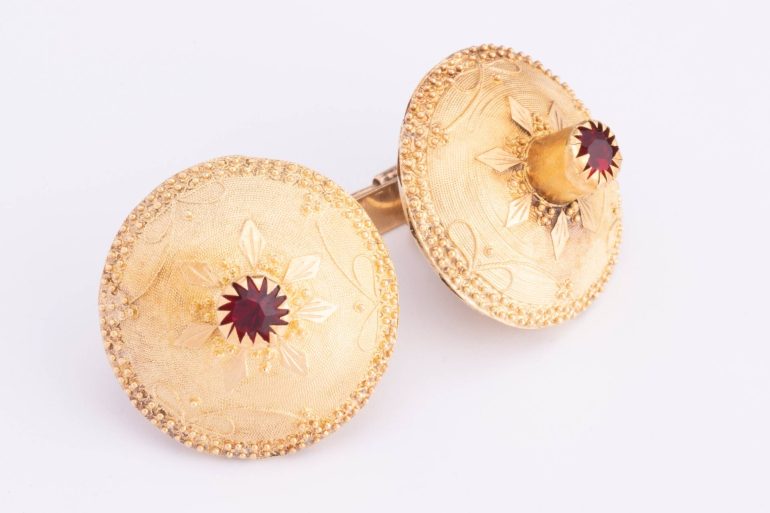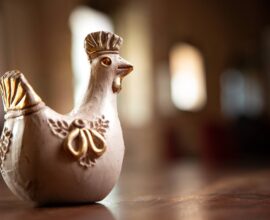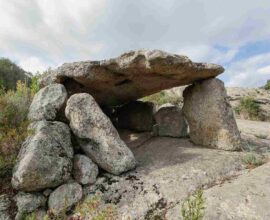Sardinian jewellery, a mix of history, legends and traditions
Sardinian jewellery, excellences appreciated all over the world
A journey to discover Sardinian jewellery, a mix of charm, myths and traditions that recount this region’s history.
In the heart of beautiful Sardinia lies a fascinating and unique history of craftsmanship that is intertwined with the traditions, culture and soul of this land: shaped by centuries of history and encounters with different peoples, it represents a vibrant sign of creativity and dedication. Through the skilled hands of master craftsmen, the materials are transformed into authentic masterpieces, each with a story to tell.
An undisputed example is the traditional Sardinian fabric, known as “pibiones fabric,” made unmistakable by its rich geometric textures and symbolic meaning. The vibrant colours and intricate designs tell stories of fertility, prosperity, and protection. Among the most famous products are the famous “pibiones belts,” symbols of strength and family bonding, worn with pride during local festivities.
Ceramics, with sinuous shapes and vivid colours, is another splendid product of the island’s craftsmanship: Mediterranean influences mix with Sardinian traditions to create unique works of art, including vases, plates, cups and statues. In particular, they are distinguished by the “drop” patterns, which symbolize the tears of sadness and joy that life brings with it.
Furthermore, master carpenters have been passionately dedicated to woodworking for centuries to give life to unmistakable objects such as the “mamuthones masks,” used during the Carnival period, and the “wooden horses,” which represent the strength and tenacity of the Sardinian people. Every sculpted detail speaks of a connection with nature and a love for tradition.
Carpet weaving is another fascinating art: precious textile works of art have always decorated homes, adding warmth and beauty to any environment. The designs and colours are often inspired by the nature of the area.
To conclude Sardinian jewellery, is the object of dreams, a symbol of beauty, wealth and protection. Silver and coral are the main materials, and traditional motifs often inspire the shapes.
They are not just ornaments, but they carry with them a sense of identity and wearing them is a testimony of respect for the history and craftsmanship of Sardinia.
Sardinian jewellery, the wonders of the island’s goldsmithing
As mentioned, Sardinian jewellery not only symbolises handed-down knowledge and ancient crafts but is cloaked in magic, mystery and superstitions. Their function and significance have spanned for centuries and have survived to this day.
The technique that characterises them is filigree, applied above all to gold and silver, which means weaving thin metal wires fixed on a support. Among the brilliant surfaces, there is also no shortage of precious stones (obsidian has a place of honour) and corals.
Among the main jewellery, we find the Sardinian button, which can be worn alone (as earrings or pendants) or as an ornament of traditional clothes. The shape, which resembles a breast, is associated with fertility and femininity and was born as a talisman to ask for and receive a prosperous, productive and happy life.
In the past, the ring was worn only by married or engaged women as a symbol of the pact of faith or the marriage union: the maninfide ring in particular, with two hands clasped to seal love. According to tradition, the fiancé gave it to the bride-to-be, who reciprocated with a knife with an engraved bone or horn handle. The shapes and figures vary from area to area.
One of the most successful jewellery internationally is the Sardinian wedding ring, which is made with filigree and is usually handed down from mother to daughter. Myth has it that it was the Janas, the fairies of the island, who forged the jewellery (adorned with precious stones) by weaving gold and silver threads. A traditional symbol, it has variants based on the territory of origin, namely the Nuorese, the Campidanese and the Fonnese. The element that unites them all is represented by small spheres.
Speaking of Sardinian earrings, on the other hand, a very common model is the hoop in gold or silver thread, often made with a coral or glass pendant and a zoomorphic figure inside. Also very popular is the circular or oval button model, in gold, with a red coral cameo, sometimes with a faceted drop pendant in red coral or teardrop.
In Southern Sardinia, the ship earring, with two joined rounded foils, and the bow earring, with a gold pendant also with a bow on a gold support with superstitious pearls and, sometimes, applied enamels, were also widespread.
“Su coccu” has found a new popularity, an amulet with a black stone set between two silver cups which, according to tradition, would ward off the evil eye from the wearer: the stone would absorb negative energy protecting the person who wears it.
Finally, here is “sa corbula”, one of the most popular pieces of jewellery that reproduces on metal the hand-woven basket without handles: with its round shape, it recalls the mother’s breast, prosperity and fertility. It is made with the spiral filigree technique starting from a finely worked base on which granules, floral motifs and precious stones are placed.
Sardinian jewellery, a fabulous souvenir
On returning from a trip to Sardinia, one of the most fascinating souvenirs is, without a doubt, a piece of jewellery rich in tradition, art and beauty as well as a memory of an unforgettable holiday like the one you can spend at the Forte Village Resort, in the enchantment of Santa Margherita di Pula, between the white sand and the crystal clear sea of the island.
The award-winning resort is home to refined boutiques where you can indulge in luxury shopping and buy fine local handicrafts including, of course, jewellery, but also wonderful embroidery, beautiful ceramics, elegant fabrics, traditional carpets and designer garments from the most renowned Italian and international brands.
Would you like to experience a fairytale holiday in an authentic paradise? Discover Forte Village Resort in Sardinia






